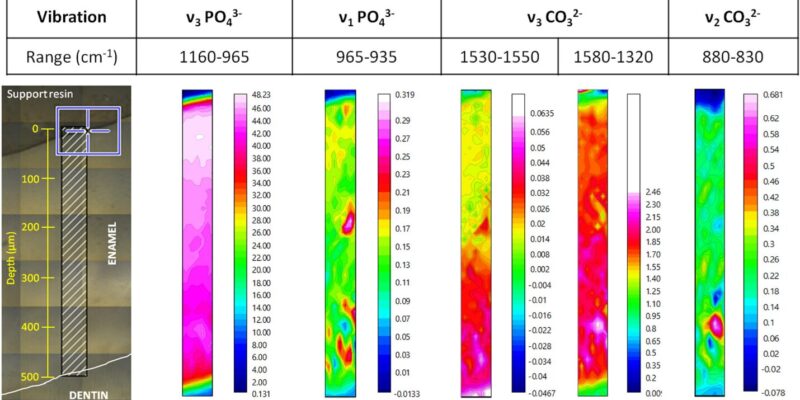
The adverse effects of traditional tooth whitening treatments based on oxidation were compared to a new treatment created by the authors using reduction by researchers from the Universitat Autnoma de Barcelona (UAB) in partnership with the ALBA Synchrotron. The unique treatment’s whitening impact was much enhanced in terms of application time, efficiency, and safety, according to findings published in Dental Materials, making it a good candidate for developing novel whitening therapies. Chemical mineral changes in tooth enamel were discovered thanks to ALBA’s MIRAS beamline experiments.
Higher concentrations of oxidising chemicals and longer application times are required for greater teeth whitening results, but this may increase side effects such as hypersensitivity, pulp damage, tooth demineralization, and gingival irritation. Furthermore, the requirement to apply these products for several hours is inconvenient for the user.
The oxidising power of hydrogen peroxide is used in most tooth whitening treatments, which breaks the double bonds of the staining molecules on the teeth’s surface, rendering them unable to absorb light. The molecule becomes transparent in this manner, resulting in a bright white smile.
The researchers studied the negative effects of whitening procedures using bovine incisors as an in vitro model. They compared traditional whitening treatments (based on carbamide peroxide oxidation) to a new technique developed and patented by the authors that uses metabisulfite to reduce staining molecules while also rendering them colourless. Metabisulfite, on the other hand, has a faster whitening action, allowing for lower concentrations and shorter application durations. The results demonstrated that the unique treatment’s whitening efficacy is greatly enhanced in terms of application time, resulting in a reduction in adverse effects. As a result, it’s a good option for developing new whitening treatments.
“When metabisulfite is encapsulated within liposomes (vesicles made of lipids), the whitening effect is enhanced because it favours the diffusion of the reducing agent into the enamel, resulting in significant whitening results in 3 minutes,” explains Manuel Valiente, professor of UAB’s Department of Chemistry and director of GTS.
They also discovered that distinct mineral alterations are promoted by utilising oxidising or reducing treatments. This was discovered thanks to chemical imaging at the ALBA MIRAS beamline. This is the first time that synchrotron light has been used to chemically map the enamel of a bovine incisor and to determine the effect of a whitening treatment in terms of chemical mineral alterations, as well as the depth to which these effects extend.
Experiments at ALBA’s MIRAS beamline
Most investigations on the adverse effects of whitening procedures on enamel focus on evaluating changes in its mechanical properties, such as surface hardness or roughness; however, these techniques are unable to provide information on the chemical changes that are occurring.
FTIR spectroscopy is a molecular vibrational technique that has been demonstrated to be useful in investigating mineralized tissues such as teeth, providing information on the chemical structure at the molecular scale. The inclusion of a microscope to FTIR microspectroscopy has enabled the integration of biochemical and spatial data. This is referred to as chemical imaging, and it has the ability to analyse tissues at a cellular level.
“Synchrotron-based Fourier transformed infrared microspectroscopy technique, available at the ALBA Synchrotron’s MIRAS beamline, can provide very precise chemical information in small areas, making it a very suitable technique for studying the changes induced by whitening treatments and characterising the extent of their effects with precision,” says Ibraheem Yousef, MIRAS beamline scientist.
More information: Clara Babot-Marquillas et al, Tooth whitening effects on dental enamel, oxidation or reduction? Comparison of physicochemical alterations in bovine enamel using Synchrotron-based Micro-FTIR, Dental Materials (2022). DOI: 10.1016/j.dental.2022.02.006




















Comments